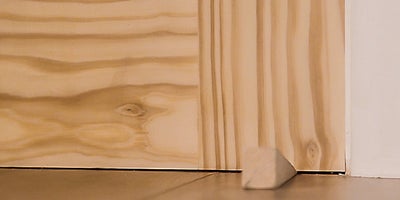How to hang an internal door
TOOLS
Planning & preparation
- Here we will show you how to replace a standard internal door, including how to trim the door to size and how to find the perfect hanging position
- When replacing an internal door, the job is made much easier if you can use the same-sized door hinges and the same hinge positions as the original door. Alternatively, you’ll need to make new hinge positions; these tend to be 150mm from the top of the door and 225mm from the bottom, with an optional third hinge in the centre of the door frame
- Internal doors come in a range of sizes, materials and finishes, so be sure to look at the range and choose a design that best suits your needs
- Bear in mind that even if you purchase a standard internal door, some door frames, especially those in older houses, may not be a standard size. Therefore, you may still need to trim your new door to fit the existing frame
- If you do need to trim your door, check the manufacturer’s instructions as the maximum amount that can be removed from the top, bottom and sides of a door varies between products
- To allow your new door to acclimatise, lay it on a flat and even surface for three days prior to hanging
- If you are planning to paint your internal door, see our online guides on how to prepare interior woodwork for painting and how to paint interior woodwork for further information
- For advice on fitting door handles, see our online guide on how to fit door & window furniture
Do it right
- If you need to trim your door to size, make sure that all reductions are made equally to opposite sides
- If you are chiselling with the grain, then it can be easy to split the wood. Avoid this by making sure the chisel you are using is sharp and that you make lots of small cuts rather than a few large ones
- It’s best to drill pilot holes to reduce the chance of the wood splitting
Staying safe
- Wear safety goggles when drilling and sawing
- Wear work gloves when handling timber
- When using a chisel, be sure to chisel away from the body
- Secure timber in a workbench when drilling or sawing
- Internal doors can be heavy so take care when lifting and ask for help if necessary
Aftercare
- Internal doors need little maintenance but it’s a good idea to keep them clean and free from dirt and dust
- Be sure to only use products that are suitable for your surface and take extra care when maintaining internal wooden doors




















